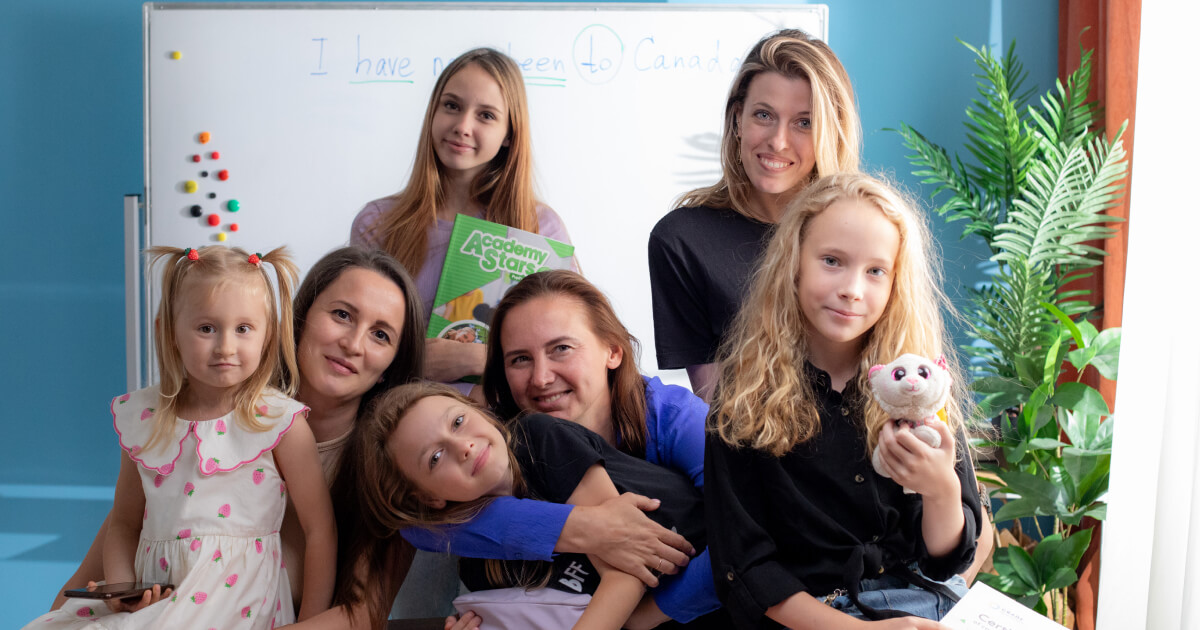Error correction
- Tips & Strategies

05.06.2025
Sometimes, most of the lesson is spent explaining a new topic, leaving barely any time for practice. You keep trying to explain a grammar point, yet students remain confused — does that sound familiar?
If so, consider trying the flipped classroom approach. In this article, we'll walk you through how this approach works and how it can benefit both teachers and students.
Flipped Classroom is an educational approach in which the traditional lesson structure is reversed: students first familiarise themselves with new content at home, and then practice, deepen, and apply their knowledge during class. In other words, the "homework" becomes preparation for the lesson, and the lesson itself becomes a space for active learning.
In the traditional model, the teacher explains the new topic during the lesson, and then students consolidate their learning at home on their own.
In the flipped classroom, it’s the opposite: students watch videos, read articles, or complete interactive exercises before the class, and then during the lesson, they discuss the material, ask questions, work on group or pair tasks, role-play dialogues, write texts — in other words, they engage actively with the language.
This format works particularly well in language learning, as it allows more time for speaking, collaboration, and feedback.
Improve Your Teacher Talk
This approach offers several advantages that can significantly ease your teaching of English and make learning more effective. Let's take a look at them.
Rather than spending time explaining theory, you can dedicate lessons to practice. Students familiarise themselves with new rules or vocabulary at home.
This leaves more time in class for exercises that allow students to apply their new knowledge. For example, you can spend more time on grammar and vocabulary exercises, role plays, and discussions, where students actively practice the theory they have already studied.
Flipped Classroom gives students the opportunity to learn at their own pace. Each student can watch the video or read the article as many times as they need.
For you, this means you can take a more tailored approach to each student and provide help during the lesson only when needed, instead of spending time repeating the same material.
Flipped Classroom allows you to use lesson time for active feedback. As students are already familiar with the material, you can focus on helping them correct misunderstandings or mistakes that may have arisen during practical exercises.
Flipped Classroom encourages students to take a more independent approach to learning. They don't wait for someone to explain something to them — they study the material on their own and use class time to deepen and practice it.
This is an important skill for learning any language: the more a student works with the material independently, the better they will remember it. For you, this reduces the workload, as you don't have to spend so much time on explanations, and instead can focus more on individual and group activities.
Flipped Classroom opens up new possibilities for using technology. It helps you be more creative in creating material, which significantly increases student engagement. It also reduces the need for printed materials and allows you to update content with minimal time and effort.

Language Analysis for Teachers
Join our course!We will share some tips on how to organise the process so that it is both convenient and effective for you and your students.
First and foremost, it’s important to ensure that students have access to materials at home. These can be video lessons, audio recordings, articles, or interactive tasks. For example, you could create a short video lesson where you clearly and accessibly explain new grammar rules or vocabulary.
This format allows students to review the material several times, going back to difficult points, which helps them better understand the topic at their own pace. Instead of spending class time on theory, you give students the opportunity to familiarise themselves with the basics at home, giving them more time for practice in class.
The second crucial step is active interaction in class. Once students have reviewed the theoretical material at home, it’s time to apply that knowledge in practice. This can involve interactive tasks, role plays, discussions, or projects, where students can use new words, phrases, or grammatical structures in real communication.
For example, you could organise a debate on a current topic, where students express their opinions in English, using newly learned language constructions. Alternatively, you can provide interactive exercises with the vocabulary or grammar they have studied.
It’s also important to regularly provide feedback and assess the results. In class, you can organise mini-tests, surveys, or practical exercises to help you understand how well students have mastered the material. This approach allows you to identify issues promptly and adjust the teaching process accordingly.
Flipped Classroom can be applied to all levels of English, but it is important to adapt the materials and approach to the specific level. For lower levels, it is crucial to choose simple, clear materials so that students do not feel overwhelmed. For higher levels, more complex tasks can be included that stimulate critical thinking and expand vocabulary.
The main limitation is that students need to be able to independently grasp the basic theory at home and then apply the knowledge in practice.
Flipped Classroom allows teachers to use class time more effectively for interactive activities, discussions, practice, and addressing specific questions that arise from students.
The effectiveness of Flipped Classroom can be assessed by several criteria:
Student engagement in class: If students actively participate in discussions, complete practical tasks, and demonstrate understanding of the material, it indicates successful implementation of the method.
Student progress: Comparing students’ performance before and after implementing Flipped Classroom will help assess whether the desired progress has been achieved.
Feedback from students: It is important to ask students about their experience: whether they find it more convenient to learn in this format, whether they encounter any difficulties, and how they assess their preparedness for the lesson.
Test and task results: Observing the results of tests and assignments will help assess whether the quality of students' knowledge is improving.
6 pronunciation activities for ESL students
So, if you want your students to speak more in class and understand the material better, give the flipped classroom approach a try. You can use ready-made videos, texts, or create a short explanation in whichever format you prefer.
The main idea is to allow students to explore the topic at home, at their own pace, before focusing on practice in class.
Kateryna Kuchynska
Author
Content Manager | Teacher of General English
Comments
Leave your comment